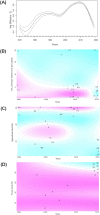A worldwide perspective on large carnivore attacks on humans
- PMID: 36719873
- PMCID: PMC9888692
- DOI: 10.1371/journal.pbio.3001946
A worldwide perspective on large carnivore attacks on humans
Abstract
Large carnivores have long fascinated human societies and have profound influences on ecosystems. However, their conservation represents one of the greatest challenges of our time, particularly where attacks on humans occur. Where human recreational and/or livelihood activities overlap with large carnivore ranges, conflicts can become particularly serious. Two different scenarios are responsible for such overlap: In some regions of the world, increasing human populations lead to extended encroachment into large carnivore ranges, which are subject to increasing contraction, fragmentation, and degradation. In other regions, human and large carnivore populations are expanding, thus exacerbating conflicts, especially in those areas where these species were extirpated and are now returning. We thus face the problem of learning how to live with species that can pose serious threats to humans. We collected a total of 5,440 large carnivore (Felidae, Canidae, and Ursidae; 12 species) attacks worldwide between 1950 and 2019. The number of reported attacks increased over time, especially in lower-income countries. Most attacks (68%) resulted in human injuries, whereas 32% were fatal. Although attack scenarios varied greatly within and among species, as well as in different areas of the world, factors triggering large carnivore attacks on humans largely depend on the socioeconomic context, with people being at risk mainly during recreational activities in high-income countries and during livelihood activities in low-income countries. The specific combination of local socioeconomic and ecological factors is thus a risky mix triggering large carnivore attacks on humans, whose circumstances and frequencies cannot only be ascribed to the animal species. This also implies that effective measures to reduce large carnivore attacks must also consider the diverse local ecological and social contexts.
Copyright: This is an open access article, free of all copyright, and may be freely reproduced, distributed, transmitted, modified, built upon, or otherwise used by anyone for any lawful purpose. The work is made available under the Creative Commons CC0 public domain dedication.
Conflict of interest statement
The authors have declared that no competing interests exist.
Figures




References
-
- Population Division of the United Nations Department of Economic and Social Affairs (UN DESA). World population prospects 2022. 2022. Available from: https://www.un.org/development/desa/pd/content/World-Population-Prospect...
Publication types
MeSH terms
LinkOut - more resources
Full Text Sources

